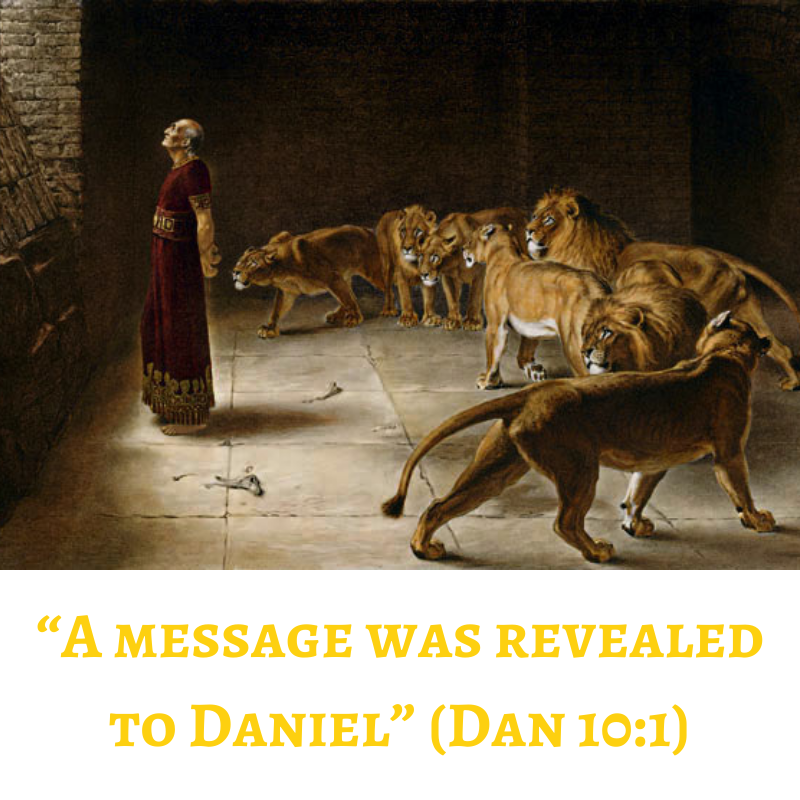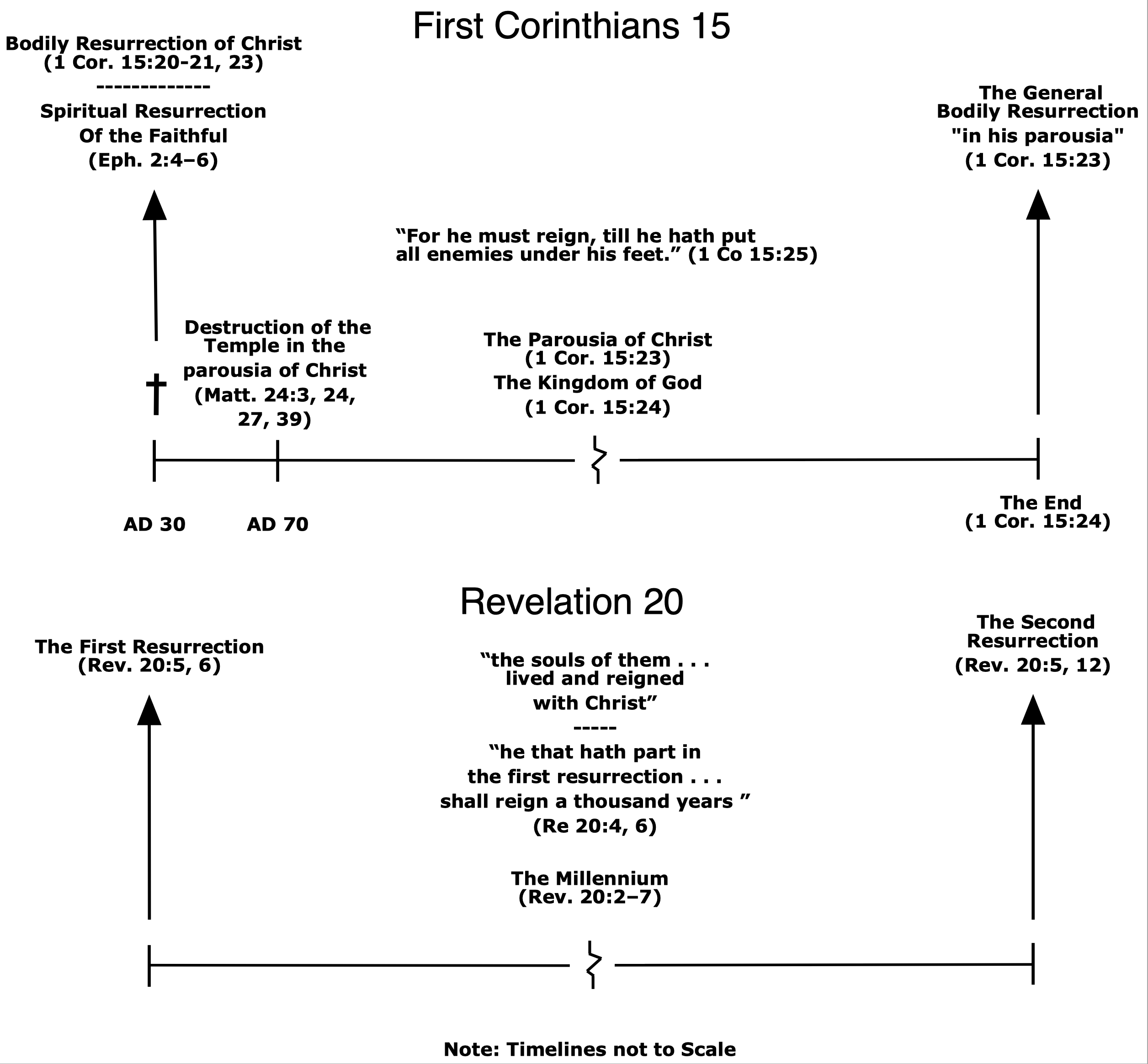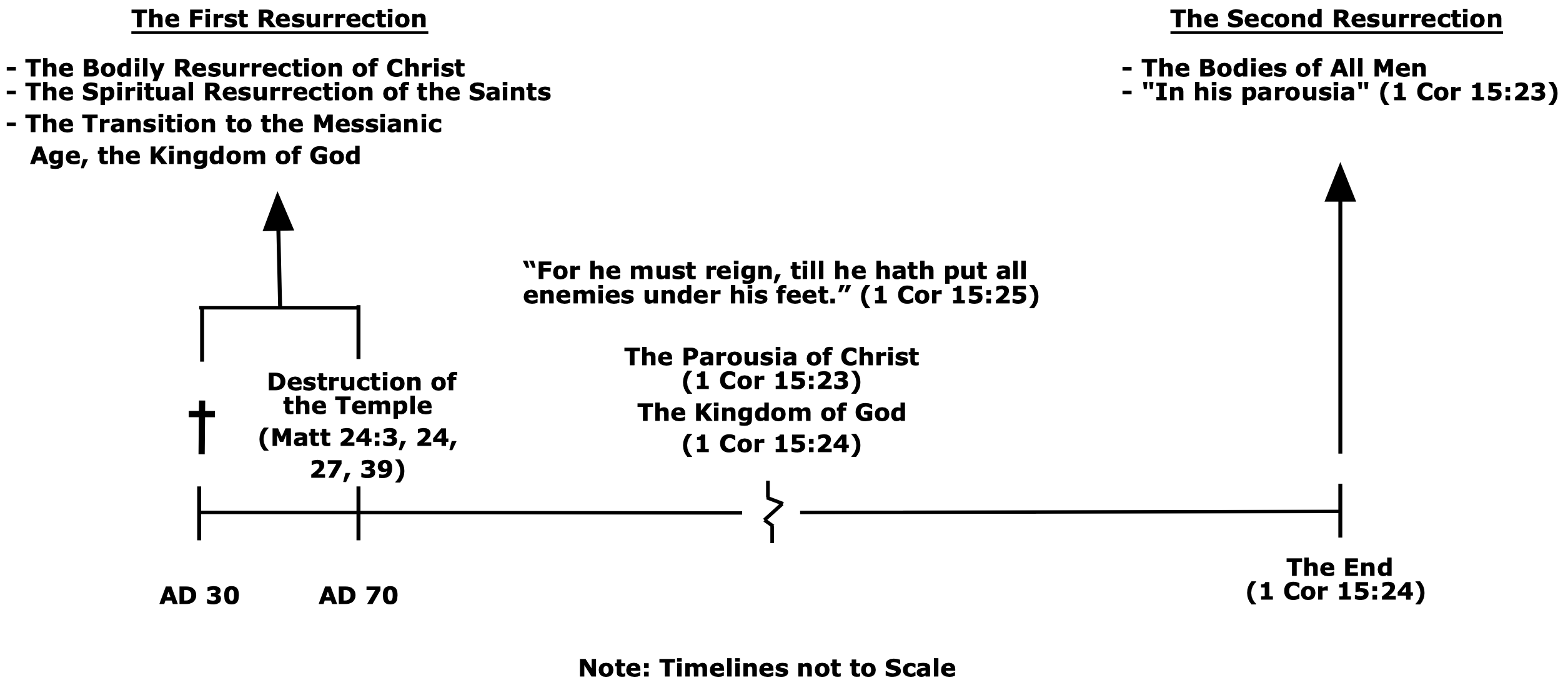
Paul’s “rapture passage” (1 Thess 4:13–5:11) does not imply that he envisioned physical bodies flying through the air in his generation. He was addressing a specific concern among the Thessalonians. Would those who lived to see the end of the Mosaic age and subsequent parousia (presence) of Christ in the messianic (kingdom) age “have [an] advantage over” those to died beforehand (1 Thess 4:15 HCSB)? Paul’s answer was no, “whether we are awake or asleep, we will live together with Him” (1 Thess 5:10 HCSB).
The following statements cause us moderns to assume Paul thought the bodily resurrection might occur while some of the Thessalonians were still alive:
The dead in Christ will rise first. Then we who are alive and remain shall be caught up together with them in the clouds to meet the Lord in the air. And thus we shall always be with the Lord. (1 Thess 4:16–17)
I have said that Paul did not think the resurrection was in his near future; his assertions mean the same thing as Jesus’ “gathering” saying (e.g., Matt 24:31). Paul envisioned the people of God, both living and dead, being caught up into full messianic-age status through events in his immediate future, including the “great tribulation” and the temple’s fall. Jesus had said these events would end the Mosaic age and establish the messianic age. In the new era, God’s people would live resurrected spiritual lives and reign with Christ (cp. Rev 20:4). As a result, the elect would participate in the bodily resurrection at the end of the messianic age.
Paul’s approach here followed that of the prophets. They had associated a set of events with messianic-age resurrection, including the Messiah’s physical resurrection and the “great tribulation,” both of which would occur in the “last days” of the Mosaic age. But they often extended their perspective to include the glories of the entire messianic age. God’s people would fill the world with fruit, his army would defeat his foes, etc. I have shown this confluence of ideas in three Old Testament prophecies: Isaiah 26:17–21 (here), Ezekiel 37–38 (here), and Hosea 13:9–14 (here).
This post will consider the fourth (and last) prophetic passage I will use to help us understand 1 Thessalonians 4:16–17. It is a passage from Daniel’s last vision (Dan 10–12) that gave a chronological account of Israel’s history in advance. It began in the prophet’s day (around 600 BC) and ended in Israel’s “latter days” (Dan 10:14). Toward the end of this vision, “one having the likeness of a man” (Dan 10:18) said,
At that time Michael shall stand up, the great prince who stands watch over the sons of your people; and there shall be a time of trouble, such as never was since there was a nation, even to that time. And at that time your people shall be delivered, every one who is found written in the book. And many of those who sleep in the dust of the earth shall awake, some to everlasting life, some to shame and everlasting contempt. (Dan 12:1–2)
To emphasize the timing of this resurrection, the “man clothed in linen” says, “When the power of the holy people has been completely shattered, all these things shall be finished” (Dan 12:7).1
My point related to Paul’s “rapture passage” is this: Daniel 12:1–2 is a vision about Israel’s “great tribulation” that occurred in the “last days” of the Mosaic age. Daniel, like Hosea (see here), placed Israel’s future (to him) resurrection after the “great tribulation.” In the text, they appear side-by-side.
Daniel Farquharson says this prophecy relates to the Roman emperors’ time and that the name Michael is “a description which applies particularly to the Son of God, and to no one else.”2
The inmillennial interpretation of this passage depends on two considerations: the prophetic foreshortening in Daniel 12:2 and the meaning of when in Daniel 12:7.
Prophetic Foreshortening
The apostles taught us to use the New Testament to determine the meaning of the Old Testament Scriptures. They said the prophets were often “searching what, or what manner of time, the Spirit of Christ who was in them was indicating when He testified beforehand the sufferings of Christ and the glories that would follow” (1 Pet 1:11). They said God has revealed “the mystery which has been hidden from ages and from generations … to His saints” (Col 1:26). So we should not use Daniel 12—or any other Old Testament passage—to define our resurrection doctrine. We should use the New Testament to establish that doctrine and then interpret the prophets’ writings.
Inmillennialism is the New Testament framework I use to understand Daniel’s resurrection passage.3 That framework rests, in part, on Paul’s great chapter regarding the bodily resurrection—the only kind of resurrection that pertained to Christ. In it, the Apostle links the Lord’s rising to the bodily resurrection at the end of the messianic age, saying,
Now is Christ risen from the dead, and become the firstfruits of them that slept. For since by man came death, by man came also the resurrection of the dead. For as in Adam all die, even so in Christ shall all be made alive. But every man in his own order: Christ the firstfruits; afterward they that are Christ’s at his coming. (1 Cor 15:20–23)
Christ’s resurrection occurred in the “last days” of the Mosaic age, during the generation in which the temple fell. The saints’ bodies will rise from the dead at the end of the messianic age.
This passage gives the pattern for understanding Daniel’s words. Jesus taught that the “great tribulation” would occur in the “last days” of the Mosaic age (Matt 24:21, 34). We should understand Daniel’s general resurrection passage by using the interpretive rule we have adopted. Some will awake to everlasting life and others to everlasting contempt at the end of Christ’s messianic-age reign. The following table summarizes this point:
| Passage | “Last Days” Event | Connector | Resurrection |
|---|---|---|---|
| Daniel 12:1–2 | A time of trouble | And | The resurrection of “those who sleep in the dust of the earth” |
| 1 Corinthians 15:20–23 | Christ’s resurrection | Afterward | The resurrection of “they that are Christ’s" |
Daniel’s “and” and Paul’s “afterward” span the entire messianic age, linking events in Paul’s generation to the ultimate result of the messianic age—the banishment of physical death from God’s creation.
This passage provides another example of the prophetic foreshortening I mentioned in my last post (here). That it occurs is consistent with the rest of Daniel’s last vision. He described six centuries of political, military, and religious history in just one chapter (Dan 11). The prophet had, of necessity, skipped long periods to provide a continual flow of events. Farquharson says, for example, that at least a 150-year gap exists between Daniel 11:39 and 40. The prophet used the word and to cover this gap just as he did the gap in Daniel 12:2.
I need to emphasize a point I made in the last post: prophetic foreshortening does not mean the prophets were unaware of the intervening periods. The three prophets I have used—Isaiah, Ezekiel, and Daniel—all foretold the messianic age. The fact that, in some prophecies, they linked events at its beginning of that age to those at its end does not mean they overlooked it altogether! Neither did they co-mingle their prophetic foreshortening with the modern (false) notions of dual fulfillment, elastic time, or already-not yet perspective. We should not read their plain time statements about when their prophecies would come to pass with such ideas in mind. J. Dwight Pentecost, for example, is wrong when he equates prophetic foreshortening with double reference:
Few laws are more important to observe in the interpretation of prophetic Scriptures than the law of double reference. Two events, widely separated as to the time of their fulfillment, may be brought together into the scope of prophecy.4
The main purpose of prophetic foreshortening is to emphasize an essential relationship between events separated by time.
“When”
Some full preterists try to use Daniel 12 to deny a future (to us) bodily resurrection. According to them, the prophet said the resurrection (Dan 12:2) would occur during the “great tribulation” (Dan 12:1). They base their argument from this passage on a single word. The resurrection would happen “when the power of the holy people has been completely shattered, all these things shall be finished” (Dan 12:7). Don K. Preston, for example, says,
If Daniel 12:2 is predictive of the “final resurrection” … there can be no doubt about when the resurrection was to occur. It was, “when the power of the holy people” was completely shattered. And that was at the end of the Old Covenant world of Israel in AD 70.5
This argument goes as follows: the final resurrection would occur at the precise time God shattered Israel’s power. We know that happened when the temple fell in AD 70. Therefore, the resurrection must have happened at that time. This view forces Preston and others to define the resurrection as an event that “has nothing to do with biological death.”6
This tragic negation of the bodily resurrection rests on the false assumption that when always require simultaneous action. The Lexham English Bible shows this is not necessary: “An appointed time, appointed times, and half an appointed time would pass when the shattering of the power of the holy people would be completed; then all these things will be accomplished.”7 Here the word when refers to the “great tribulation” in which God would shatter Israel’s power. Afterward, all these things—including the bodily resurrection at the end of the messianic age—would occur.
This usage of when is not uncommon. For example, Nathan gave David a prophecy of the Messiah as follows:
When your days are fulfilled and you rest with your fathers, I will set up your seed after you, who will come from your body, and I will establish his kingdom. He shall build a house for My name, and I will establish the throne of his kingdom forever. (2 Sam 7:12–13)
This prophecy referred to Solomon as a type, but its fulfillment pertained to Christ. In neither case did Nathan mean everything would occur at the precise moment of David’s death; he meant it would occur after David died.
The same is true in Daniel. God would shatter the power of the holy people and, after that, “those who sleep in the dust of the earth [would] awake, some to everlasting life, some to shame and everlasting contempt” (Dan 12:2). The New Testament tells us it would be at the end of Jesus’ messianic-age reign, after he makes all other enemies his footstool. An event in the “last days” of the Mosaic age would lead to an event at the end of history.
After surveying the Jewish writings from 200 BC to AD 70, Brant Pitre says,
The concept of eschatological tribulation is not only widespread in late Second Temple literature, it is also intrinsically related to several key aspects of early Jewish messianism and restoration eschatology. Together, these interrelated concepts and motifs form a kind of matrix or framework which illuminates the function and significance of the tribulation.8
The “great tribulation” of Daniel 12:1 and the general resurrection are intrinsically related, even though the messianic age separates them.
Conclusion
We must factor these observations into our views of resurrection. In previous blog posts, I have maintained that the Scriptures speak of two resurrections that pertain to the messianic age, one at its beginning and the other at its end. Jesus spoke of the first one in John 5:24–27 and the second in John 5:28–29. John also spoke of the “first resurrection” and, by implication, a second resurrection in his famous passage on the millennium (Rev 20:1–14). I equated the first with Christ’s bodily resurrection, as the following diagram shows:9

This baseline view of the two resurrections served my previous purposes. Now, I must add nuance to this picture. The first resurrection comprised Jesus’ bodily resurrection, Israel’s “great tribulation,” the temple’s fall, and the other redemptive events God performed during the “last days” of the Mosaic age. Here is a shorter version: the first resurrection was the transition from the Mosaic age to the messianic age. The following diagram shows this nuance:

A one-to-one relationship exists between the two resurrections. All persons who rose spiritually with Christ in the first will rise bodily “to everlasting life” (Dan 12:2) in the second—“on such the second death hath no power” (Rev 20:6). All those not having a part in the first resurrection will rise “to shame and everlasting contempt” (Dan 12:2) and “come forth … to the resurrection of condemnation” (John 5:25) in the second (physical) resurrection.
To understand Paul’s language in 1 Thessalonians 4:16–17, we must recognize his familiarity with the prophets’ manner of speaking. He used prophetic foreshortening as they did: he associated things in his immediate future (the “great tribulation”) with events at the end of the messianic age (bodily resurrection).
Footnotes
- The image in this post is Daniel’s Answer to the King by Briton Rivière (1840–1920). This file (here) is in the public domain (PD-US).
- James Farquharson, A New Illustration of the Latter Part of Daniel’s Last Vision and Prophecy (London: Smith, Elder, and Co., 1838), 155.
- See Michael A. Rogers, Inmillennialism: Redefining the Last Days (Tullahoma, TN: McGahan Publishing House, 2020), 263. This book is available here in hardcopy and here as a PDF. A free summary PDF document of inmillennialism is here.
- Quoted by Walter C. Kaiser, Jr., The Uses of the Old Testament in the New (Chicago: Moody Press, 1985), 64.
- Don K. Preston, Seventy Weeks Are Determined for … the Resurrection (Ardmore, OK: Jadon Productions, 2007), 116 (emphasis added).
- Preston, Seventy Weeks, 39.
- W. Hall Harris, III et al., eds., The Lexham English Bible (Bellingham, WA: Lexham Press, 2012), Dan 12:7. The italics are in the original and show supplied English words for which there is no Hebrew equivalent.
- Brant Pitre, Jesus, the Tribulation, and the End of the Exile: Restoration Eschatology and the Origin of the Atonement (Grand Rapids; Tübingen: Baker Academic; Mohr Siebeck, 2005), 128–29. I thank Don K. Preston for making me aware of this book.
- Published in A Delayed Millennium? — Part 1.

4 comments
This adds great clarity. Thank You!
And thank you for taking the time to leave a comment!
Thank you for your work. Can I ask one question though. How did you come up with the end of the Messianic Age? Isn’t “world without end” and “I will establish the throne of his kingdom forever. (2 Sam 7:12–13) mean the kingdom of God lasts forever?
Rita,
Thank you for your encouragement and excellent question. I will do my best to answer it in my post for September 15.
Mike